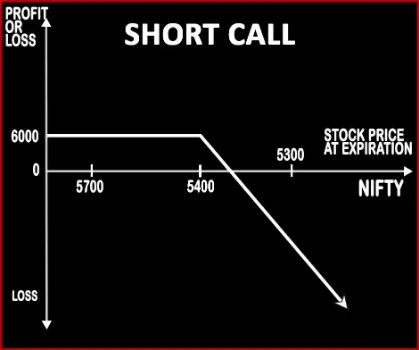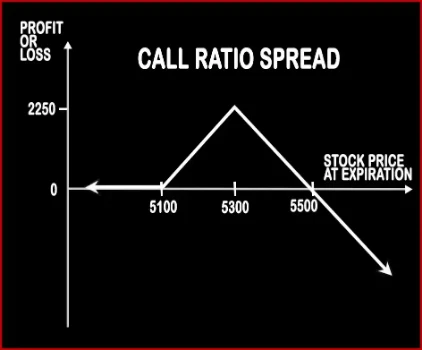Compare Strategies
| SHORT CALL | RATIO CALL SPREAD | |
|---|---|---|

|

|
|
| About Strategy |
Short Call Option StrategyA trader shorts or writes a Call Option when he feels that underlying stock price is likely to go down. Selling Call Option is a strategy preferred for experienced traders. However this strategy is very risky in nature. If the stock rallies on the upside, your risk becomes potentially unquantifiable and unlimited. If the strategy |
Ratio Call Spread Option StrategyAs the name suggests, a ratio of 2:1 is followed i.e. buy 1 ITM Call and simultaneously sell OTM Calls double the number of ITM Calls (In this case 2). This strategy is used by trader who is neutral on the market and bearish on the volatility in the near future. Here profits will be capped up to the premium amount and risk will be potentially unlimited since he is .. |
SHORT CALL Vs RATIO CALL SPREAD - Details
| SHORT CALL | RATIO CALL SPREAD | |
|---|---|---|
| Market View | Bearish | Neutral |
| Type (CE/PE) | CE (Call Option) | CE (Call Option) |
| Number Of Positions | 1 | 3 |
| Strategy Level | Advance | Beginners |
| Reward Profile | Limited | Limited |
| Risk Profile | Unlimited | Unlimited |
| Breakeven Point | Strike Price of Short Call + Premium Received | Upper Breakeven Point = Strike Price of Short Calls + (Points of Maximum Profit / Number of Uncovered Calls), Lower Breakeven Point = Strike Price of Long Call +/- Net Premium Paid or Received |
SHORT CALL Vs RATIO CALL SPREAD - When & How to use ?
| SHORT CALL | RATIO CALL SPREAD | |
|---|---|---|
| Market View | Bearish | Neutral |
| When to use? | It is an aggressive strategy and involves huge risks. It should be used only in case where trader is certain about the bearish market view on the underlying. | This strategy is used by trader who is neutral on the market and bearish on the volatility in the near future. Here profits will be capped up to the premium amount and risk will be potentially unlimited since he is selling two calls. |
| Action | Sell or Write Call Option | Buy 1 ITM Call, Sell 2 OTM Calls |
| Breakeven Point | Strike Price of Short Call + Premium Received | Upper Breakeven Point = Strike Price of Short Calls + (Points of Maximum Profit / Number of Uncovered Calls), Lower Breakeven Point = Strike Price of Long Call +/- Net Premium Paid or Received |
SHORT CALL Vs RATIO CALL SPREAD - Risk & Reward
| SHORT CALL | RATIO CALL SPREAD | |
|---|---|---|
| Maximum Profit Scenario | Max Profit = Premium Received | Strike Price of Short Call - Strike Price of Long Call + Net Premium Received - Commissions Paid |
| Maximum Loss Scenario | Loss Occurs When Price of Underlying > Strike Price of Short Call + Premium Received | Price of Underlying - Strike Price of Short Calls - Max Profit + Commissions Paid |
| Risk | Unlimited | Unlimited |
| Reward | Limited | Limited |
SHORT CALL Vs RATIO CALL SPREAD - Strategy Pros & Cons
| SHORT CALL | RATIO CALL SPREAD | |
|---|---|---|
| Similar Strategies | Covered Put, Covered Calls | Variable Ratio Write |
| Disadvantage | • Unlimited risk to the upside underlying stocks. • Potential loss more than the premium collected. | • Unlimited potential loss. • Complex strategy with limited profit. |
| Advantages | • With the help of this strategy, traders can book profit from falling prices in the underlying asset. • Less investment, more profit. • Traders can book profit when underlying stock price fall, move sideways or rise by a small amount. | • Downside risk is almost zero. • Investors can book profit from share prices moving within given limits. • Trader can maximise profit when the share closes at the upper breakeven point. |